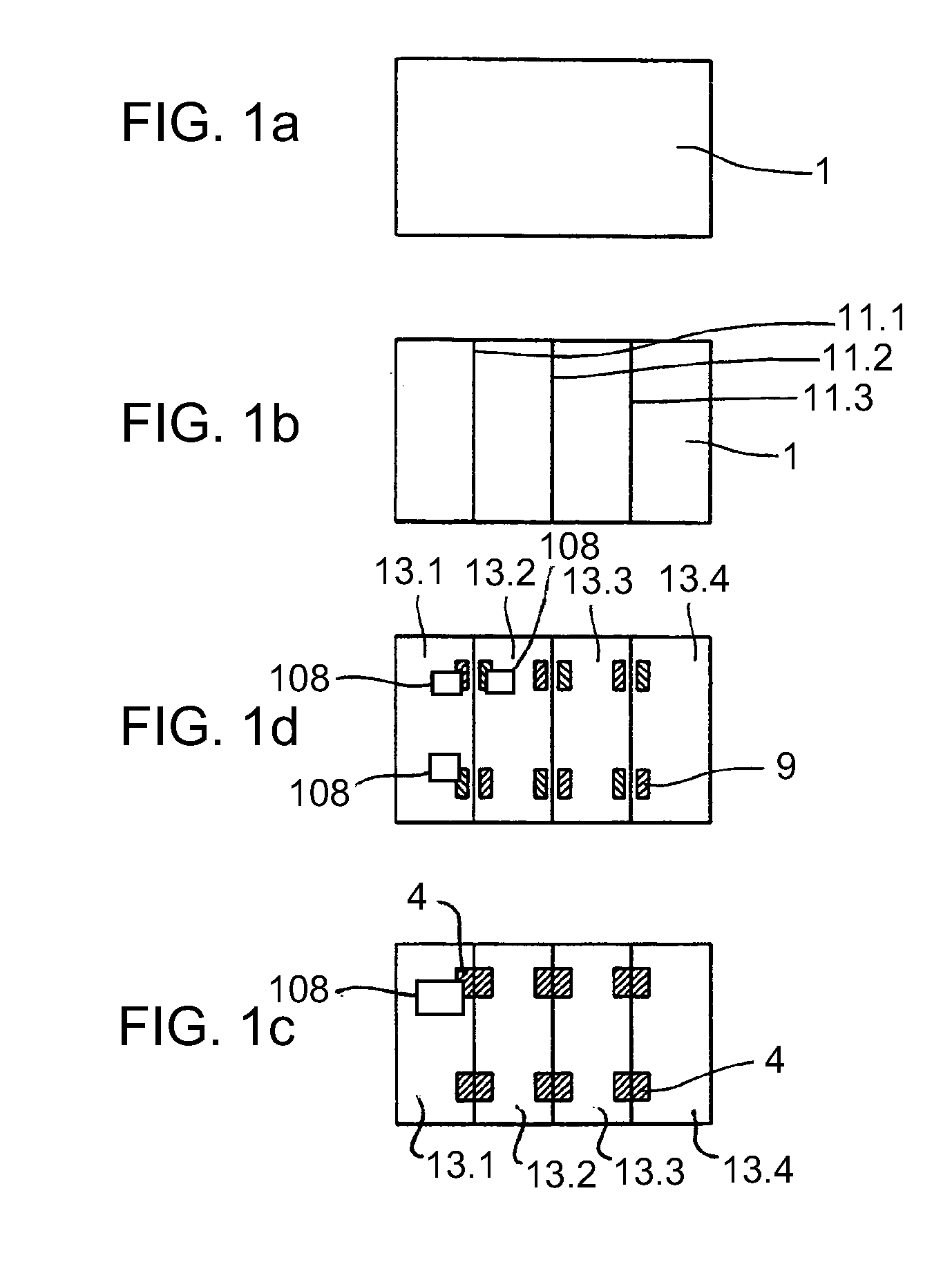Method for conductively connecting a component on a transparent substrate
- Summary
- Abstract
- Description
- Claims
- Application Information
AI Technical Summary
Benefits of technology
Problems solved by technology
Method used
Image
Examples
Embodiment Construction
[0070]FIGS. 1a through 1d show a process sequence for the production of a component arrangement, comprising a transparent substrate with transparent conductive layer and components arranged thereupon, in particular light emitting diodes or respectively LED-modules.
[0071]When producing a component arrangement, a substrate 1 with a transparent conductive layer is coated over its entire surface in the illustrated design variation, for example in the sol-gel method (FIG. 1a). The layer is preferably not only a conductive transparent layer, for example an ITO-layer, but a conductive transparent layer which is also heat absorbent. Heat absorbent layers are tin oxide layers, for example FTO (SnOx:F) or ATO (SnOxSb). Conceivable are however also ZnOx:Ga, ZnOx:B, ZnOx:Al or Ag / TiOx, whereby x is in the range between 1 and 2, depending on the doping concentration and stoichiometry.
[0072]Subsequently a structuring is produced according to FIG. 1b, for example by means of laser which locally he...
PUM
 Login to View More
Login to View More Abstract
Description
Claims
Application Information
 Login to View More
Login to View More - R&D
- Intellectual Property
- Life Sciences
- Materials
- Tech Scout
- Unparalleled Data Quality
- Higher Quality Content
- 60% Fewer Hallucinations
Browse by: Latest US Patents, China's latest patents, Technical Efficacy Thesaurus, Application Domain, Technology Topic, Popular Technical Reports.
© 2025 PatSnap. All rights reserved.Legal|Privacy policy|Modern Slavery Act Transparency Statement|Sitemap|About US| Contact US: help@patsnap.com


